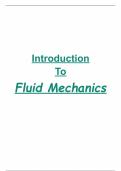Pascals principle - Study guides, Class notes & Summaries
Looking for the best study guides, study notes and summaries about Pascals principle? On this page you'll find 27 study documents about Pascals principle.
Page 3 out of 27 results
Sort by

-
Fluids and Bernoulli’s equation
- Class notes • 1 pages • 2024
-
- $7.99
- + learn more
Well written simplified content describing various parts of fluids in basic physics with insight to bernoullis equation. There includes an MCAT question that puts the content on the page to the test. Topics covered are in correspondence with pressure in-depth, viscosity of fluids, pascals principle and basic understandings of how fluids function in Physics.
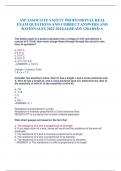
-
ASP ASSOCIATE SAFETY PROFESSIONAL REAL EXAM QUESTIONS AND CORRECT ANSWERS AND RATIONALES 2022-2024|ALREADY GRADED A
- Exam (elaborations) • 103 pages • 2024
-
- $30.49
- + learn more
ASP ASSOCIATE SAFETY PROFESSIONAL REAL EXAM QUESTIONS AND CORRECT ANSWERS AND RATIONALES |ALREADY GRADED A The battery pack of a pocket calculator has a voltage of 3.0V and delivers a current of 0.17mA. How much charge flows through through the circuit in one hour of operation? a. 0.61 C b 0.17 C c. 0.51 C d. 0.51 C e. 4.7 x 10^-5 C --ANSWER- a. 0.61 C Charge = Current x Time 1 A x s = 1 C Consider two aluminum wires. Wire #1 has a length L and a cross-sectional area A. Wire...
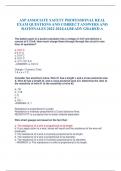
-
ASP ASSOCIATE SAFETY PROFESSIONAL REAL EXAM QUESTIONS AND CORRECT ANSWERS AND RATIONALES 2022-2024|ALREADY GRADED A
- Exam (elaborations) • 103 pages • 2023
-
- $12.40
- + learn more
The battery pack of a pocket calculator has a voltage of 3.0V and delivers a current of 0.17mA. How much charge flows through through the circuit in one hour of operation? a. 0.61 C b 0.17 C c. 0.51 C d. 0.51 C e. 4.7 x 10^-5 C --ANSWER- a. 0.61 C Charge = Current x Time 1 A x s = 1 C Consider two aluminum wires. Wire #1 has a length L and a cross-sectional area A. Wire #2 has a length 2L and a cross-sectional area A/3. Determine the ratio of the resistivity of wire #1 to the r...
the document provides you the best basic knowledge of fluid mechanics, clearing all your doubts and helping in building strong concepts.
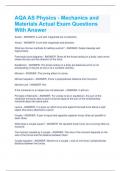
-
AQA AS Physics - Mechanics and Materials Actual Exam Questions With Answer
- Exam (elaborations) • 6 pages • 2024
-
- $10.99
- + learn more
AQA AS Physics - Mechanics and Materials Actual Exam Questions With Answer Scalar - ANSWER- A unit with magnitude but no direction. Vector - ANSWER- A unit with magnitude and direction. What are the two methods for adding vectors? - ANSWER- Scale drawings and trigonometry. Free-body force diagrams - ANSWER- Show all the forces acting on a body, each arrow shows the size and the direction of the force. Equilibrium - ANSWER- The forces acting on a body are balances and it is not a...
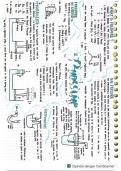
-
Summary - Physics: Pressure
- Summary • 1 pages • 2024
-
- Free
- + learn more
Explains the definition of pressure and the different types of pressure such as gas pressure and liqiud pressure, also explains about the concept of hydraulics and the principals used such as the pascal’s principles. It has the explanatation of the instruments used to calculate pressure.
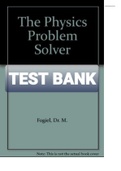
-
Exam (elaborations) TEST BANK FOR The Mechanics Problem Solver
- Exam (elaborations) • 1337 pages • 2022
-
- $22.26
- + learn more
Exam (elaborations) TEST BANK FOR The Mechanics Problem Solver PARTICLE VIBRATIONS .................................................. 851 23 RIGID BODY VIBRATIONS .............................................. 896 24 SYSTEMS HAVING MULTI-DEGREES OF FREEDOM ... 954 Coupled Harmonie Oscillators .............................................. 954 FOI'Ced Vibration .................................................................... 964. Normal Modes of Vibration and Natural Frequencies ...

That summary you just bought made someone very happy. Also get paid weekly? Sell your study resources on Stuvia! Discover all about earning on Stuvia

